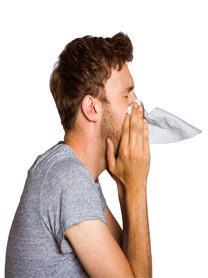Sunshine and Vitamin D

Dr. Kye focuses on treating the entire person and not simply managing symptoms. He has confidence in the healing power of nature and believes people have an innate ability to move towards health. He sees his role as helping to guide people along this journey, and to this end he primarily uses gentle, minimally invasive... more
Sun Exposure
- Sun exposure provides numerous benefits that can’t be captured with supplements, such as increased immunity, less risk of autoimmune conditions, and reduced depression.
- Even though getting a sunburn increases the risk of skin cancers, getting moderate sun exposure without getting burned decreases your cancer risk.
- Sunscreen is helpful in preventing sunburn but blocks many beneficial effects of sun exposure.
- For people worried about the aging effects of the sun, it is better to nourish the skin with a healthy diet and good nutrition and avoid getting burned.
- Since the face gets the most sun exposure, protecting your face with a hat is the best way to get the benefits of sunlight while protecting your face from too much damaging UV radiation.
For a long time, it has been common knowledge that the sun is dangerous, that we all needed to protect ourselves against it with sunscreens or clothing, and that sun exposure would cause premature aging and cancer. At the same time, it has been known in the scientific community for almost 200 years that something in sunlight was important for preventing certain diseases. This was realized to be vitamin D around the beginning of the 20th century and has led to many different foods being fortified with vitamin D, which continues to this day [1].
Is the sun good or bad for us? Are there benefits to sun exposure that go beyond vitamin D? Can we simply supplement with vitamin D and avoid all the risks of cancer and aging that comes with the sun? The story as told by the mainstream is, unfortunately, not totally correct. Being out in the sun will not necessarily give you skin cancer. Simply supplementing with vitamin D does not give the same benefits as actual sun exposure. And many of the sunscreens on the market contain chemicals that are causing harm. Let’s take a look at what we know.
Vitamin D
Vitamin D is made in the skin when ultraviolet light reacts with a form of cholesterol. Ultraviolet light is divided into three different categories: UVA, UVB, and UVC. UVC is completely blocked by the atmosphere as it has the shortest wavelengths of the three. UVB only gets through the atmosphere when the sun is high in the sky (above 50 degrees), and UVA is present whenever there is sunlight hitting the surface. As vitamin D is primarily made with UVB, this means that – for the areas of the earth north and south of the equator – it can only be made during the middle of the day during the summer months. The body can make vitamin D with UVA but it requires much more time in the sun, and very little is able to be synthesized [2].
Once a certain amount of vitamin D is made, getting more UV exposure will start to produce other metabolites, such as lumisterol and tachysterol. Vitamin D will also be converted back to its precursor with continued exposure. In this way, it is impossible to produce too much vitamin D from sun exposure [1].
If something blocks UVB from penetrating the skin vitamin D synthesis will be very low. Dark skin increases the amount of time a person has to spend in the sun to produce the same amount of vitamin D as in a light-skinned person. Wearing sunscreen that blocks UV radiation will also dramatically decrease vitamin D synthesis. Since glass blocks UVB radiation getting sun exposure through glass will not produce much vitamin D if any. Aging also decreases vitamin D synthesis, as older people need more time in the sun to make the same amount when compared to younger people [1].
Vitamin D Benefits
Vitamin D levels in a person are associated with a reduced risk for a lot of health conditions. Without enough vitamin D, children get rickets, where their bones don’t grow the right way since vitamin D helps the body absorb calcium. These children end up with weak and fragile bones. Having higher levels of vitamin D is also correlated with reduced mortality from all causes, reduced cancer mortality, increased immunity, reduced autoimmune diseases (multiple sclerosis, rheumatoid arthritis, Crohn’s disease, and type 1 diabetes), type 2 diabetes, high blood pressure, peripheral vascular disease, coronary artery disease, heart attack, heart failure, stroke, schizophrenia, depression, Alzheimer's, and epilepsy [1].
Sunlight Benefits
It turns out that for some of the diseases listed above, having higher levels of vitamin D protects against them, but if vitamin D levels are low supplemental vitamin D, it doesn’t make a difference. Higher levels of vitamin D from sun exposure, but not from supplements, helps decrease the risk of colon cancer, multiple sclerosis, type 2 diabetes, prostate cancer, and non-Hodgkins lymphoma [3]. Either there is something else that we get from the sun, or the vitamin D that’s made in the skin isn’t the same as the vitamin D we get in supplements. Perhaps the benefit is from the secondary substances produced from sunlight, like lumisterol or tachysterol. There is some evidence that lumisterol has anti-tumor properties [1].
An intriguing theory, introduced by Stephanie Seneff, is that sunlight allows the body to add a sulfate group to cholesterol and that vitamin D made in the skin has this sulfate group attached [4]. Supplemental vitamin D is not sulfated in this way. She suspects that the sulfated form of vitamin D is responsible for the immune-enhancing and anti-tumor correlations. Sulfated vitamin D was dismissed back in the early 1980s because it was found to have very little effect in increasing calcium absorption [5]. Although it was never studied for any potential immune-boosting effects. Unfortunately, there don’t appear to be any supplements that contain vitamin D in this form.
Sun Dangers
The evidence is clear that getting burned by the sun increases the risk of all skin cancers, melanoma, and non-melanoma. However, the risk of melanoma actually goes down with more sun exposure, as long as there is no burning. The link between non-melanoma skin cancers and sun exposure is weak. Some studies have found that more sun leads to increased risk of squamous cell carcinoma (SCC) but not basal cell carcinoma (BCC). The US Preventative Services Task Force, in their May 2012 Final Recommendation, reported no increased risk of SCC or BCC with long-term or total sun exposure [3]. At this point, it seems safe to say that the risk of non-melanoma skin cancer may go up with large amounts of the sun over a lifetime, especially in light-skinned people.
Another aspect of sun exposure is that UVA and UVB can cause aging of the skin, due to oxidative damage that reduces the strength and elasticity of the connective tissue. This is generally not seen as a health risk, but it can be a cosmetic concern.
Wearing Sunscreen
It is important to weigh the risks and benefits of using sunscreen. Sunscreen will undoubtedly protect you from getting a sunburn, and if you’re going to be out in the sun all day without a hat or other protection it’s probably a good idea. On the other hand, many substances used in sunscreens are toxic. Many of the chemicals are endocrine disrupters, acting like estrogen in the body after being absorbed through the skin. These include oxybenzone, octinoxate, homosalate, octisalate, octocrylene, and avobenzone [6]. Avobenzone is particularly unstable and will react with sunlight and water, breaking down into several by-products that are quite toxic [7,8]. Many of these substances can cause allergic reactions in the skin and increased chemical sensitivity. Overall, health risks usually outweigh the benefits.
There are many sunscreens now available that use minerals instead of chemicals. The two main substances used are zinc and titanium oxide. In general, these are much safer than the chemical sunscreens, though there is some concern about the effect of nanoparticles getting into the body. In lotion form very few – if any – particles are absorbed through the skin; however, if using a spray-on sunscreen these particles could enter the lungs, causing harm. Using a lotion instead of a spray is certainly much safer.
What Should You Do?
Since there are so many benefits to getting sun rays, going outside without sunscreen is needed at times if you want to be as healthy as possible. However, there are some ways to reduce your risk of skin cancer in the process.
Getting Sun Without Burning
The best time of the day to get direct sun on your skin is right in the middle when the sun is directly overhead. Get to know your skin so you can tell how much sun you need to have a very slight reddening of the skin. Then, limit your direct exposure so you only 1/2 to 3/4 of that amount. For someone with very light skin, this could be as little as 3 minutes, especially if they are outside in the middle of the day during summer. For someone with dark skin, this could be up to an hour. Aim to get sun like this at least 3 times per week, and preferably every day. As you spend more time in the sun your skin will adapt by darkening; then you will be able to spend more time without causing any inflammation.
If you need or want to be outside in the sun long enough to get burned, make sure you protect yourself. Because of the toxicity of many sunscreens, it is generally preferable to wear a hat and loose, comfortable clothing that covers your arms and legs. If you decide to wear sunscreen, choose a mineral-based one instead of a chemical-based one. However, let yourself get some sun before putting any on, that way you will still receive the benefits.
Protect and Nourish
At higher latitudes during the winter months there is little to no UVB from the sun, so protecting yourself at this time from sun exposure would limit the harm without sacrificing any benefits. Additionally, being careful of excessive sun exposure through glass will help decrease UVA exposure when there is less benefit due to the lack of UVB. However, even though UVB seems to be the most beneficial (in the right amounts) UVA alone still has positive effects on the immune system [9]. In Chinese Medicine, it is important to get sun in the wintertime because it represents a source of yang. Perhaps the modulation of the immune system is one way to represent this benefit.
According to Chinese Medicine, the aging effects of sun exposure are due to the yang of the sun drying up the yin of the blood. When UV radiation damages cells in the skin, if the body is healthy it will heal. To promote this healing factor it’s important to nourish the blood. Eating plenty of fruits and vegetables, especially those with different colors. The substances that make plants colorful, like the blue of a blueberry, or the orange of a carrot, help keep the blood clean and healthy. If you aren’t vegetarian or vegan there are certain animal products that are very nourishing to the blood. Eating some form of collagen is very helpful to keep the skin soft and supple. The traditional way people got collagen in their diets was through cooking bones and gristle into soup; this dissolved the connective tissue of the joints or feet to create a rich broth. Though this is a superior method getting collagen, in powder form is now possible as well. In addition to this type of bone broth, eating liver is also very nourishing for the blood. Just a few ounces a week is enough. Make sure to buy high-quality liver from grass-fed or pastured animals.
For many people, it is difficult to get enough sun, especially in the wintertime. Supplementing with vitamin D, even though it’s not the same as making it yourself, can be very helpful. Getting vitamin D from a whole-food source is likely to provide more benefit than taking a purified supplement in a pill or drop form. There is evidence that traditional food sources, like cod liver oil, contain multiple forms of vitamin D and its metabolites. This is more similar to what we make naturally in our skin, and these different forms have different effects on the body. For a more detailed examination check out Chris Masterjohn’s article Vitamin D in Cod Liver Oil.
In summary, you should get as much direct sun as you can without getting burned. Protect yourself with clothing first and sunscreen second. Eat properly to nourish your blood. Get supplemental vitamin D from food instead of pills. And enjoy it, because the sun feels good!







